t.z. | Thursday, 27 August 2015
Flytying stuff, and/or stuff in general is very connected to the big question in life. Where do you put your stuff? George Carlin did a very nice piece about that.
My approach is minimalistic. I try to use very few materials to generate the flies I need. It´s my thing. Others do have different approaches, which is nothing wrong with. But my simple mind needs to have overview. I feel my flies get better than too.
So over the years I have (and still am) perfecting my kit. I will give you a quick run through which materials and tools I use and how I store them.
tying desk.
I like to have a dark surface under the materials and in my view. It really helps when trying to focus on the fly in the vice. A busy backdrop confuses the eye and is tiresome.
light
make sure you have enough light when tying. I found nice daylight lamp with a magnifying lens for rather small money.
thread
I mostly tie with very thin Dyneema in white. It is very hard to break and the thread is mostly a means to hold the materials. Of course one can use thread as „tying material“ as well which results in a different choice of thread based on the fy designs various parameters - as in North Country Spiders for example.
tools
a set of small, very sharp scissors / a larger pair of scissors for cutting rougher materials
bobbin holders - it is handy to have two at least. It is essential for some patterns and can be a live saver when one thread breaks and one needs to continue tying without having to redo the whole fly
material clamps - regular paper clips sold in office supply stores are very sufficient for the job, however - there is several specialised clamps and even clamping systems on the market.
knotting tool - I use a simple version or my fingers
bodkin needle
a piece of velcro or an old toothbrush for roughing up the flies
fly tying vise
The vise is a tool holding the hook. In the older days flies were tied on hand, meaning by holding materials and the hook in the hands without any vise. A vise is very handy though. In my mind it has two main functions a) holding the hook and b) support the hand which is offering the material onto the hook. I prefer vises with pedestals. Clamping a vise to a table did not work so well for me, but this is personal preference really. The drawback on pedestal version is the weight.
hooks
all Partridge of Redditch
CZ - 10 to 18 - http://www.partridge-of-redditch.co.uk/products/barbless/patriot-barbless/patriot-czech-nymph
SLD 2 - 10 to 18 - http://www.partridge-of-redditch.co.uk/products/barbless/patriot-barbless/patriot-standard-dry
CS 54 SE - http://www.partridge-of-redditch.co.uk/products/saltwater/salt-water-shrimp
dubbing
I mostly use seals fur or hare dubbing. The dubbing is stored in small plastic pouches. I cut one corner of the pouch to access the dubbing. The other storing method is to stuff the dubbing in to see through drinking straws or in a plastic container made from greenhouse window material. I got that tip from the famous Norwegian fly tying woman Marit Kronen.
wing materials
fibres from an arctic hares foot , also known as snowshoe hare. Beware of copies, the arctic hare is not a rabbit.
deer hair - I trie to get it directly from a hunter. The stuff sold in shops is softer.
antron yarn for wingpost of parachute flies
materials for extended bodies
synthetic yarn like antron or polyester nylon
foam
deer hair
body materials for nymphs
I mostly use Virtual Nymph nymphskin products. They are easy to use and quite reliable in their quality.
feathers
I have a whole skin from a partridge, a few pheasant tail feathers and a big bundle of peacock herl.
hackle
I use very little genetic rooster hackle in my flies and keep it to either black or grizzly.
fur
a hares mask is very useful and can be used for many flies. It supplies hackle, dubbing, tails & legs ... you name it
squirrel skin, mink zonkers
ribbing materials
copper wire, tinsel
beads & lead
Tungsten beads are a good choice. Due to the high specific weight of tungsten beads from that material can be of smaller size as other materials. Lately some new form of tungesten heads cam onto the market featuring up with eyes and such. Nice to look at but not necessary.
adhesive lead foil
storing pouch
I found a pouch for - believe or not - orthopaedic stockings (not mine in a shop). This bag is really „it“ - all material & tools (except the vises pedestal) has place in it. It simply is rolled together for transport.
So you can see that it does not need halv a house for a quite a fly tying kit. All the flies below are tied with what you see on the table.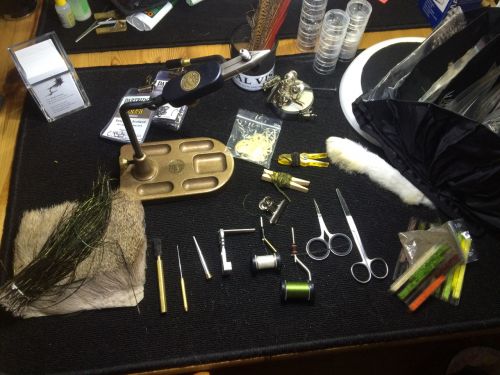
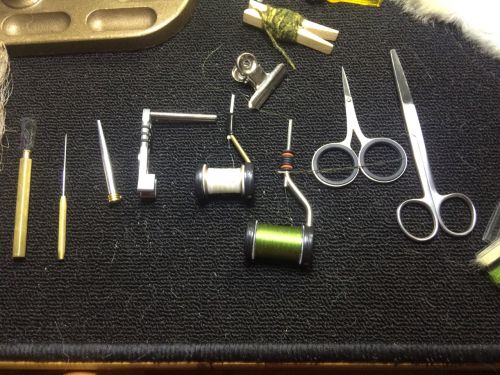

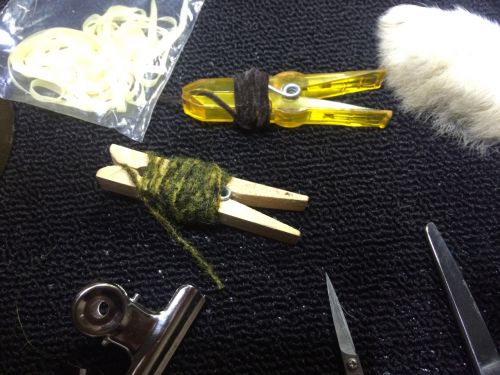

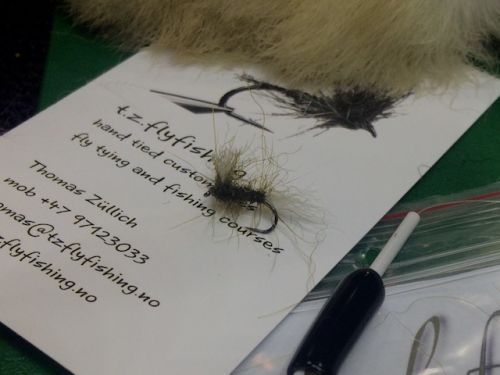
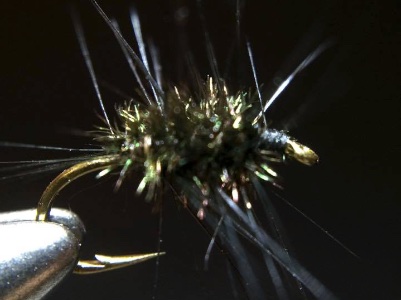
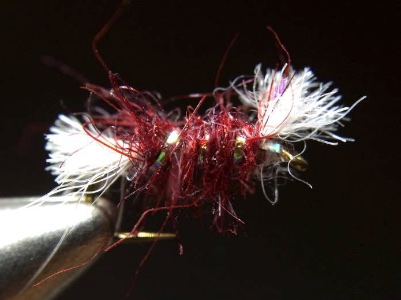
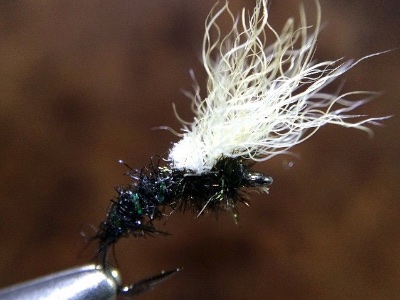
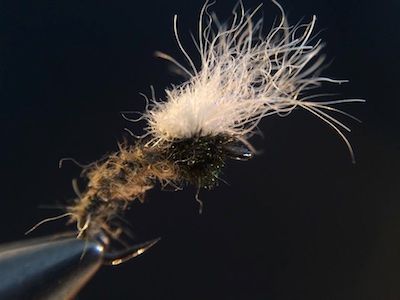
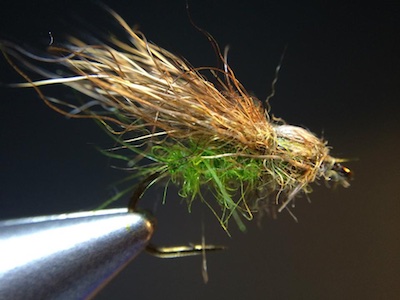
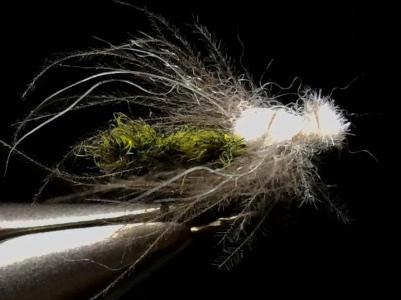
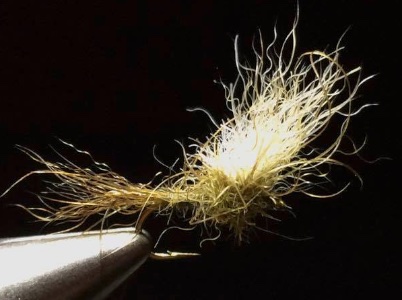
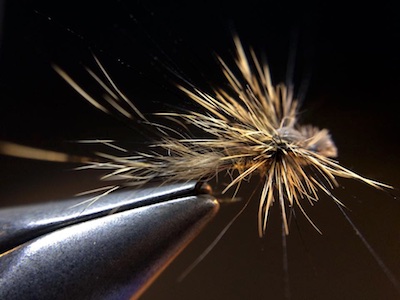
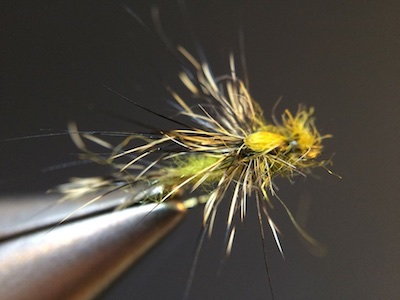
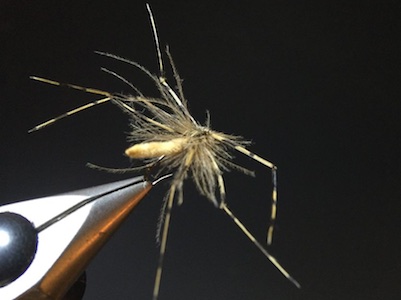
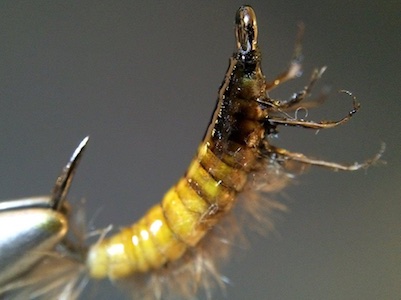
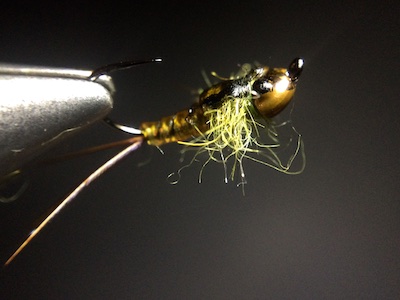
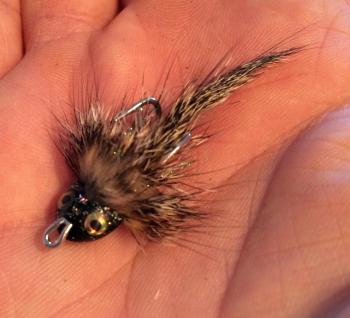

www.tzflyfishing.no
*optimized for viewing on mobile devices*
